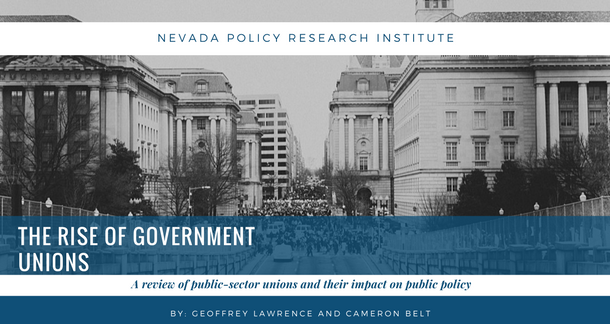
Rise of Government Unions
Executive Summary
Unions in America are changing. In 2009, for the first time, a majority of union members were not workers in private industry, but in government.
Following decades in which the forces of increased economic dynamism and global competition led to lower union participation in the private sector, national union leaders began to recognize that government workers were not subject to the same constraints and would be a desirable target for unionization. By their nature, governments enjoy a protected monopoly on services within a given jurisdiction and almost never go out of business—in part because there are few limitations on their ability to increase revenue through taxation.
Large national unions—beginning with the American Federation of State, County, and Municipal Employees (AFSCME)—recognized that these key advantages could allow union leaders to maintain their membership base even in the face of declining private sector union density. Although prominent leaders within the union movement initially opposed unionizing government, AFSCME’s success prompted them to change their position. Within several large unions, a new focus emerged on organizing government employees and pursuing legal changes that would facilitate this unionization.
In particular, union leaders pushed policymakers to pass laws that would require government employers to negotiate with unions and submit to a forcible disputeresolution process that would guarantee a union contract. At the prodding of AFSCME, Wisconsin to become the first state to pass a statewide compulsory-bargaining law for government employees. Subsequently President Kennedy issued an executive order encouraging federal workers to unionize. Next, state lawmakers passed a wave of compulsory-bargaining laws, with 35 states enacting them by 1984. In 2009, for the first time in U.S. history, a majority of union members worked in government.
Despite highly-publicized efforts to curtail government union collective bargaining powers in Ohio and Wisconsin, almost all changes to government collective bargaining statutes over the past 20 years have increased, rather than decreased, the powers enjoyed by government unions.
In part, this has happened because government employers have very different incentives from private employers. Many elected officials primarily care about getting re-elected. Government unions donate heavily to political campaigns and can devote vast manpower to “get out the vote” activities. Many politicians have actively encouraged unionization of the government in order to boost their electoral prospects. They have also given government unions pay and staffing concessions they knew would strain public finances in order to secure their support.
This paper provides theoretical and historical background for our companion paper,1 which uses three different advanced econometric to examine the extent to which collective bargaining in government increases the cost of state and local government. It concludes that mandatory collective bargaining statutes raise the per capita costs of state and local government by $500 to $750 annually. In total, state and local governments spent $127 billion to $164 billion more than they otherwise would have in 2014 due to these requirements.
Download the full report ![]() Rise of Govt Unions
Rise of Govt Unions